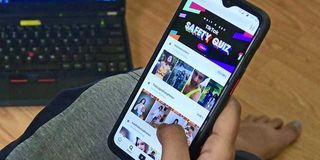Premium
TikTok: Balancing regulation, digital rights

An Indian mobile phone user browses through Tik Tok in Bangalore on June 30, 2020.
TikTok has become both a stage for expression and a site of growing concern. From dance trends and youth empowerment to disturbing revelations of child exploitation and algorithmic harm, the platform has thrust Kenya into a complex debate—how to regulate global tech giants while safeguarding constitutional freedoms.
This is no longer just about content moderation. It’s about redefining the relationship between digital platforms, public institutions and the rights of citizens.
Following President William Ruto’s engagement with TikTok CEO Shou Zi Chew in August 2023, the platform agreed to intensified local moderation and establishment of a regional office in Nairobi. For Kenya, this was not just a diplomatic win—it was an assertion of digital sovereignty. Yet, it also raised new questions: Who defines “harmful content”? And how do we ensure that regulation doesn’t infringe on digital freedoms?
In response to these questions, TikTok expanded its engagement in Africa. It launched the Sub-Saharan Africa Safety Advisory Council, which localises safety frameworks. This move represents a shift from top-down platform control to inclusive, community-informed governance.
At the grassroots level, TikTok’s #SaferTogether campaign has reached over 116,000 users in Kenya through digital literacy training, school-based programmes and creator-led workshops. Teacher-influencers are using their platforms to teach young people about safe content creation, online etiquette and reporting mechanisms. These interventions illustrate a bottom-up approach to digital safety, complementing regulatory top-down strategies.
While the push for regulation is vital, legal scholars and digital rights activists caution against blunt-force solutions. The Centre for Intellectual Property and Information Technology Law at Strathmore University says Kenya must ensure that its efforts to control harmful content do not restrict legitimate expression, particularly for marginalised voices.
Can Kenya build a rights-respecting, locally grounded framework that protects its youth, defends free expression and holds Big Tech accountable? The answer will determine the future of digital trust, not just in Kenya, but across Africa’s growing online public square.
Kennedy Kamande Wangari

